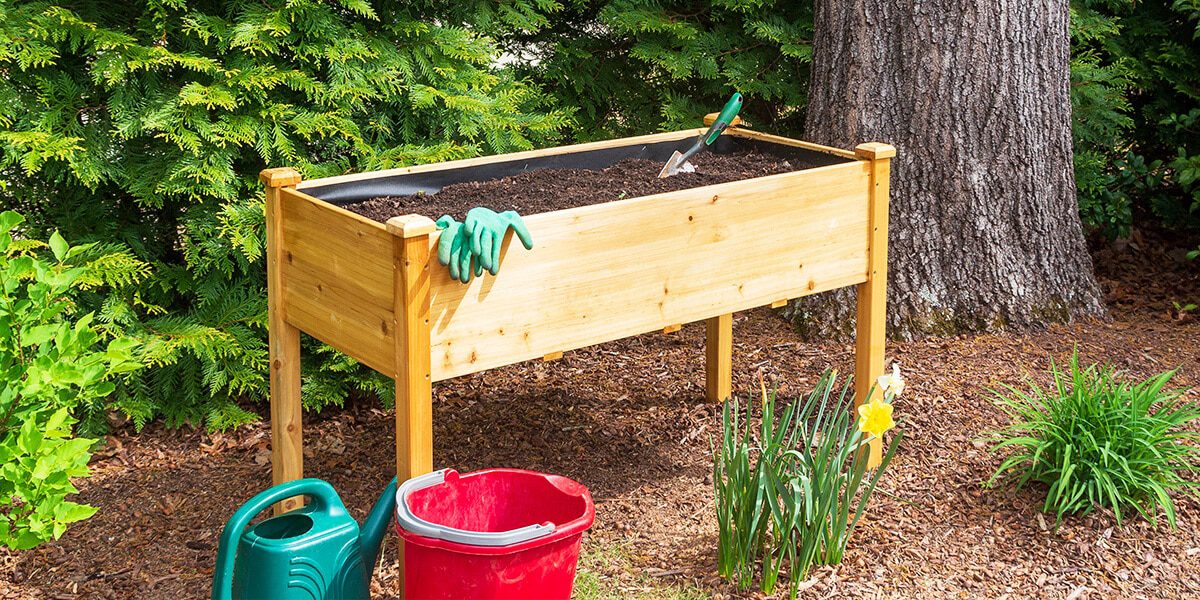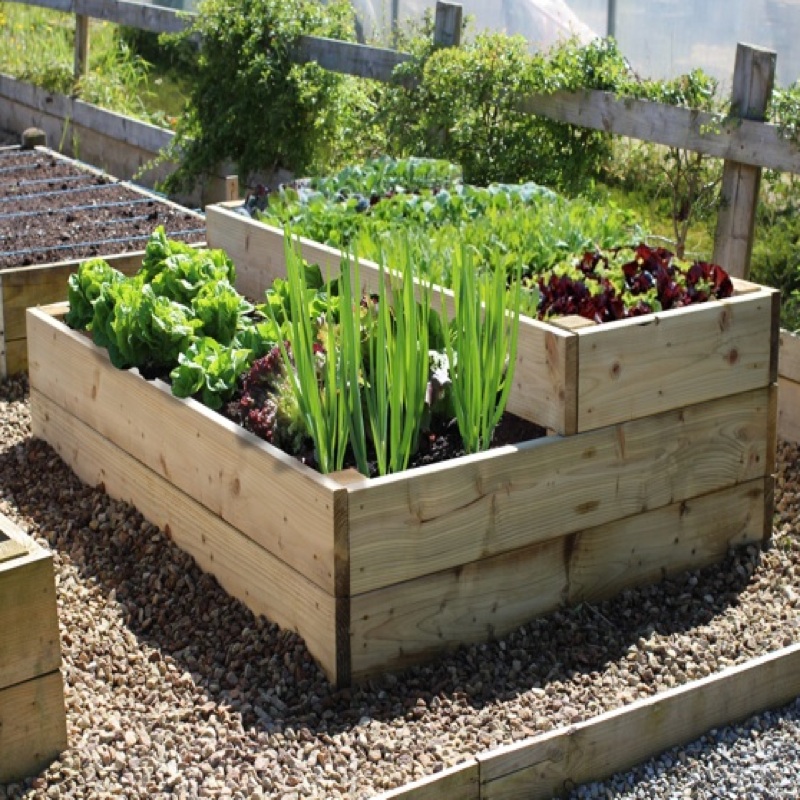The Appeal of Raised Vegetable Gardens: Unleashing the Beginner Gardener’s Potential
Starting a raised vegetable garden for beginners is an exciting endeavor that brings numerous benefits. These gardens offer enhanced accessibility, increased productivity, and a reduced likelihood of pests and diseases compared to traditional in-ground gardens. By elevating the garden bed, you minimize the need for bending and kneeling, making gardening more comfortable and less physically demanding. Additionally, the contained environment of a raised bed allows for better soil management, improved drainage, and increased warmth, fostering optimal conditions for vegetable growth.
Growing your own vegetables in a raised bed garden offers a unique sense of satisfaction and accomplishment. It allows you to cultivate a connection with nature, contribute to a sustainable lifestyle, and enjoy the fruits of your labor in the form of fresh, homegrown produce. With the right guidance and resources, even novice gardeners can embark on this rewarding journey and learn how to start a raised vegetable garden for beginners.
Choosing the Perfect Location: Site Selection for Your Raised Vegetable Garden
Selecting the ideal location for your raised vegetable garden is crucial for its success. Start by considering sunlight requirements, as most vegetables thrive in full sun, which means at least six hours of direct sunlight daily. Assess your potential garden sites throughout the day to ensure they meet this criterion.
Proximity to water sources is another essential factor. Locate your raised vegetable garden near a convenient water source to facilitate regular watering. This consideration will save you time and effort, especially during the peak growing season when moisture demands are high.
Additionally, protect your raised vegetable garden from harsh weather conditions, such as strong winds, heavy rain, and extreme temperatures. Position your garden beds against a wall, fence, or other structures to buffer them from prevailing winds. Consider using row covers, cold frames, or hoop houses to extend the growing season and shield your plants from adverse weather conditions.
To prepare the site for your raised vegetable garden, remove any grass, weeds, or debris from the area. Level the ground to ensure proper drainage and even weight distribution for the garden bed. Once the site is prepared, you can proceed to construct and install your raised vegetable garden bed, taking advantage of the benefits that come with this beginner-friendly gardening method.
Materials and Design: Constructing the Ideal Raised Vegetable Garden Bed
When building a raised vegetable garden bed, consider factors such as durability, cost, and aesthetics to create the perfect structure for your needs. Common materials for raised beds include wood, stone, brick, and metal, each with its advantages and disadvantages.
Wood is a popular choice due to its affordability, ease of use, and natural appearance. However, ensure you use untreated, rot-resistant wood, such as cedar or locust, to avoid contaminating the soil with harmful chemicals. Stone, brick, and metal offer longer lifespans but may be more expensive and challenging to work with.
Design-wise, raised vegetable garden beds typically measure between 3 and 4 feet wide, allowing for easy access to the entire bed without stepping on the soil. The length can vary based on your available space and desired capacity. Height is another crucial consideration, with most beds ranging from 6 inches to 2 feet tall. Taller beds are ideal for individuals with mobility issues, while shallower beds are suitable for shallow-rooted vegetables.
Curved or L-shaped beds can add visual interest to your garden, while straight-edged beds offer a more traditional look. Regardless of the design, ensure the bed has a bottom to prevent soil erosion and maintain structural integrity. Finally, line the bottom of the bed with hardware cloth or landscape fabric to prevent pests, such as rodents, from burrowing up into the bed.
Soil Composition and Amendments: Nurturing the Foundation of Your Raised Vegetable Garden
Proper soil composition and amendments are crucial for a thriving raised vegetable garden. Ideally, the soil should be loose, well-draining, and rich in organic matter. Aim for a balanced mixture of 60% topsoil, 30% compost, and 10% potting soil to provide the necessary nutrients, moisture retention, and drainage.
Topsoil serves as the base for your raised vegetable garden, providing structure and stability. Compost, rich in organic matter, contributes to soil fertility, water retention, and aeration. Potting soil, typically lighter and fluffier than topsoil, improves drainage and encourages healthy root growth.
Adding amendments, such as perlite, vermiculite, or coir, can further enhance soil composition. Perlite and vermiculite improve drainage and aeration, while coir, made from coconut husks, retains moisture and encourages beneficial soil microorganisms. Regularly incorporating compost and organic matter, such as aged manure or leaf mold, helps maintain optimal soil health and fertility.
When preparing your raised vegetable garden bed, mix the soil components and amendments thoroughly. Ensure the soil is loose and well-aerated, promoting healthy root growth and water absorption. By nurturing the foundation of your raised vegetable garden with proper soil composition and amendments, you set the stage for a productive and rewarding gardening experience.
Selecting Vegetables: Curating a Beginner-Friendly Raised Vegetable Garden Plant Palette
Choosing the right vegetables for your raised vegetable garden is an essential step in ensuring a successful and enjoyable gardening experience. Consider factors such as climate, growing season, and ease of cultivation when curating your plant palette. By selecting a variety of vegetables, you can create a diverse and productive garden that caters to your culinary preferences and regional growing conditions.
For beginners, consider starting with easy-to-grow vegetables like lettuce, radishes, and herbs. These plants typically have short growing seasons, require minimal maintenance, and can be harvested multiple times throughout the season. As your skills and confidence grow, you can gradually introduce more challenging vegetables, such as tomatoes, peppers, and eggplants, which may require additional care and attention.
To maximize productivity and diversity, consider planting a combination of cool- and warm-season vegetables. Cool-season vegetables, such as broccoli, peas, and spinach, thrive in spring and fall temperatures, while warm-season vegetables, like beans, corn, and cucumbers, prefer the heat of summer. By incorporating both types of vegetables, you can extend your growing season and enjoy a continuous harvest throughout the year.
Lastly, don’t forget to consider companion planting when selecting your vegetables. Companion planting involves pairing plants with complementary growth habits, pest-repellent properties, or beneficial nutrient interactions. For example, basil and tomatoes make excellent companions, as basil deters pests and enhances the flavor of tomatoes. By incorporating companion planting into your garden design, you can create a thriving, harmonious, and productive raised vegetable garden.
Planting and Maintenance: Tending to Your Raised Vegetable Garden throughout the Growing Season
Once your raised vegetable garden is established, it’s essential to maintain it properly throughout the growing season. Proper planting, watering, fertilizing, and regular care will ensure a healthy, productive garden and minimize potential challenges such as pests and diseases.
When planting, follow the instructions on seed packets or plant labels regarding spacing, depth, and sun exposure. Planting at the appropriate depth and spacing ensures that plants have enough room to grow and access to sunlight and water. For beginners, consider starting with transplants instead of seeds, as they are easier to handle and typically more resistant to pests and diseases.
Watering is crucial for a successful raised vegetable garden. Raised beds tend to dry out more quickly than in-ground gardens, so ensure your plants receive adequate moisture. Aim to water deeply and consistently, providing about one inch of water per week. Using a soaker hose or drip irrigation system can help conserve water and reduce evaporation.
Fertilizing your raised vegetable garden is essential for optimal growth and productivity. Choose a balanced, slow-release fertilizer, and follow the package instructions for application rates. Regularly incorporate compost and organic matter into the soil to maintain fertility and provide additional nutrients. Avoid over-fertilizing, as this can lead to excessive growth and reduced fruit production.
Regular maintenance, such as weeding, pruning, and staking, is necessary to keep your raised vegetable garden healthy and productive. Weeds compete with vegetables for water, nutrients, and sunlight, so remove them promptly. Pruning and staking help maintain plant shape, improve air circulation, and prevent plants from becoming tangled or damaged. Regularly inspect your garden for signs of pests or diseases, and address any issues promptly to minimize damage.
Harvesting and Enjoying: Savoring the Fruits of Your Labor from Your Raised Vegetable Garden
Harvesting fresh vegetables from your raised vegetable garden is a rewarding experience that brings joy and satisfaction to both novice and experienced gardeners. To ensure a continuous supply of fresh produce, familiarize yourself with the optimal harvesting times for each vegetable variety in your garden. Picking vegetables at their peak of ripeness not only maximizes flavor and nutritional value but also encourages the plant to produce more fruit.
When harvesting, use clean, sharp tools to avoid damaging the plants or spreading diseases. For root vegetables, such as carrots and beets, gently loosen the soil around the plant with a garden fork or trowel before pulling them out. Leafy greens, such as lettuce and spinach, can be harvested by cutting the outer leaves, allowing the inner leaves to continue growing. Regularly harvesting encourages bushier growth and prevents plants from bolting, or going to seed, prematurely.
In addition to consuming your fresh produce, consider preserving the surplus for later use. Common preservation methods include canning, freezing, and dehydrating. By preserving your harvest, you can enjoy the fruits of your labor long after the growing season has ended. Sharing your excess bounty with friends, family, and neighbors is another wonderful way to spread the joy of gardening and foster a sense of community.
To fully appreciate the harvesting experience, incorporate your fresh produce into creative and delicious recipes. Incorporate your homegrown vegetables into salads, stir-fries, soups, and other dishes to enhance flavor and nutrition. By celebrating your harvest, you not only reap the rewards of your labor but also strengthen your connection with nature and the food you consume.
Expanding Your Horizons: Taking Your Raised Vegetable Garden to the Next Level
As a beginner in raised vegetable gardening, you’ve already accomplished a significant milestone by learning the basics and successfully growing your own vegetables. Now, it’s time to expand your knowledge and skills to further enhance your gardening experience. By exploring new techniques, experimenting with different vegetable varieties, and engaging with the gardening community, you can take your raised vegetable garden to new heights.
One way to advance your gardening skills is by implementing sustainable practices, such as companion planting, crop rotation, and integrated pest management. Companion planting involves pairing vegetables with complementary growth habits, pest-repellent properties, or beneficial nutrient interactions. Crop rotation helps prevent the buildup of pests and diseases by changing the location of vegetable families within the garden each year. Integrated pest management focuses on using a combination of cultural, physical, and biological methods to manage pests and diseases, minimizing the need for chemical controls.
Another approach to expanding your gardening horizons is by trying new vegetable varieties, such as heirloom or unusual cultivars. These unique vegetables not only add visual interest to your garden but also offer diverse flavors and textures for your culinary creations. By growing a wide variety of vegetables, you can create a more resilient and productive garden while enhancing your gardening experience.
Lastly, connecting with the gardening community can provide valuable support, inspiration, and learning opportunities. Join local gardening clubs, participate in community gardens, or engage in online forums to share experiences, ask questions, and learn from others. By tapping into the wealth of knowledge and expertise within the gardening community, you can continue to grow and thrive as a raised vegetable gardener.






